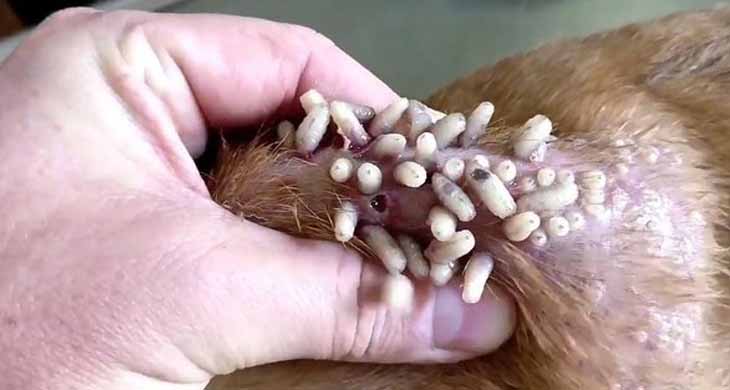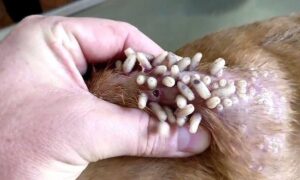Symptoms, Causes, and Treatments of Mango Worms in Dogs

Mango worms, unlike typical worms, reside within a dog’s skin, causing discomfort and irritation if left untreated. These parasites, known as mango flies, find refuge in dogs’ skin due to its nutritional richness. Originating in Africa, they infiltrate the skin during their larval stage, consuming tissue and establishing a parasitic relationship.
Although mango worms are common in Africa, they are rare in the United States. The parasites lay eggs in soil containing excrement or urine, targeting dogs as hosts. The larvae grow by feeding on the host’s tissue, creating red boils that house maggot-like worms. Symptoms include itching, skin redness, blisters, and behavioral changes.

For treatment, veterinary assistance is crucial, as attempting removal alone can lead to severe infections. Veterinarians use specialized injections to eliminate larvae, or physically remove them by squeezing boils. Preventive measures involve limiting exposure to contaminated soil and maintaining the dog’s coat to boost resilience.
While mango worms are unlikely to infest humans due to their lack of fur and soil-bound activities, accidental transfer can occur through clothing contact with mango fly eggs. Understanding mango worm infestations is essential, especially in areas prone to them. If a dog shows signs of infestation, immediate medical care is necessary.




